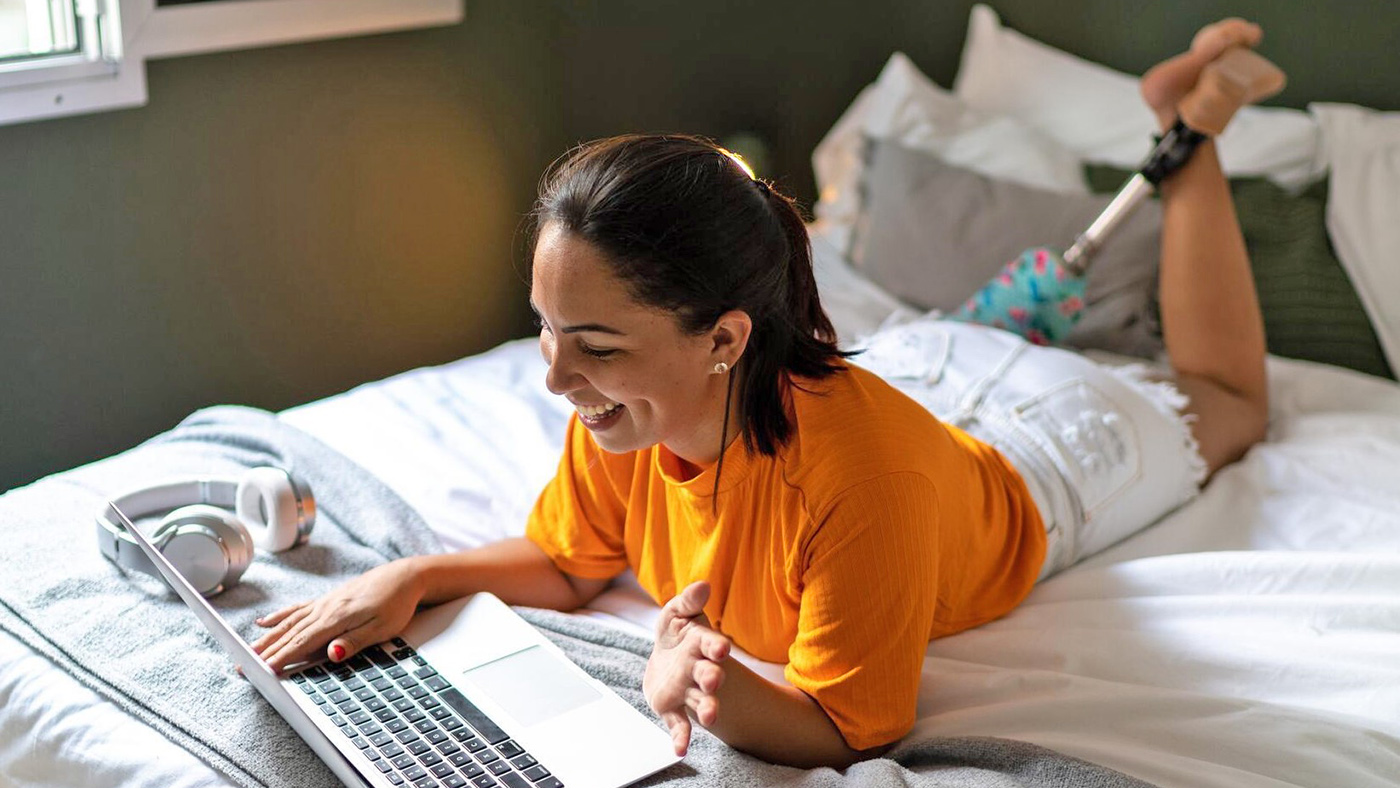More than a decade before COVID-19 made telehealth commonplace, Dr. Melissa Tinney began offering video telehealth visits to her limb loss and other patients in West Virginia. Tinney was an early adopter of video visits because she realized it was often hard for the Veterans in her care to travel to VA facilities.
She worked with Veterans who experienced polytrauma, traumatic brain injury or amputation. Many of them lived in rural parts of West Virginia far from a VA medical center. That time-consuming travel burden discouraged some Veterans from getting VA care.
Video visits solved that problem for many of the Veterans Tinney treated.
Now working out of Ann Arbor VA, Tinney continues to serve Veterans who have undergone amputation. She uses VA Video Connect, VA’s secure videoconferencing app, to make life easier for the Veterans in her care.
Less time and less travel
Before Tinney used video visits, Veterans having an artificial limb fitted would need to visit at least two providers—Tinney and the prosthetist adjusting the limb. If a Veteran didn’t live close to either provider, the travel burden was too much.
Now thanks to VA Video Connect, a Veteran can combine two or more visits into one. They can have their artificial limb adjusted in-person at their nearest community prosthetist while Tinney weighs in through videoconference. This eases the travel burden for the Veteran and anyone who helps them get to their appointments.
For providers, VA Video Connect is a timesaver. Without the app, quality care would involve a relay of calls and in-person visits between Veterans, providers and other members of the VA care team. That relay naturally would mean more office work for providers and some lag time in care. VA Video Connect reduces both of those issues.
“To me, it is more efficient,” Tinney said. “You’re not having to chase emails and phone calls or relying on the Veteran to be the messenger. It’s more simplified.”
Better communication and insight
VA Video Connect can bring together multiple members of a Veteran’s VA care team, including primary care providers, prosthetists, mental health professionals and physical therapists. And there are a lot of benefits to these shared video visits. Everyone receives the same information at the same time.
“It really allows for good communication between the Veteran, the community prosthetist and our amputation clinic team at VA. It’s really, really a nice way to bring everybody together,” Tinney added.
Another benefit to VA Video Connect is that it enables VA care team members to see how the Veteran moves and navigates their home environment. They can address any challenges they see, including carpeting, pets, inadequate lighting or trip-and-fall hazards. Seeing the Veteran at home establishes a stronger connection between the care team and the Veteran as compared with a phone call.
VA’s telehealth services are available at no extra cost for Veterans nationwide. Veterans can use telehealth to meet with VA providers by video for routine visits, follow-up appointments, regular mental health visits and more. Telehealth does not replace all in-person health care, but it can help to fit care into Veterans’ schedules and improve their VA experience. If you are a Veteran interested in receiving VA care through telehealth, speak with your VA care team. You can also learn more by visiting the VA Telehealth Services website.
Topics in this story
More Stories
Study underscores important role COVID vaccination can have in protecting Veterans from infection and reducing long-term health consequences
Columbia VA’s robotic surgery teams completed their 800th robotic surgery and are on schedule to hit 1,000 by the end of the year.
In a decentralized clinical trial, Veterans can participate from their own homes or local VA instead of having to travel to a research site.







